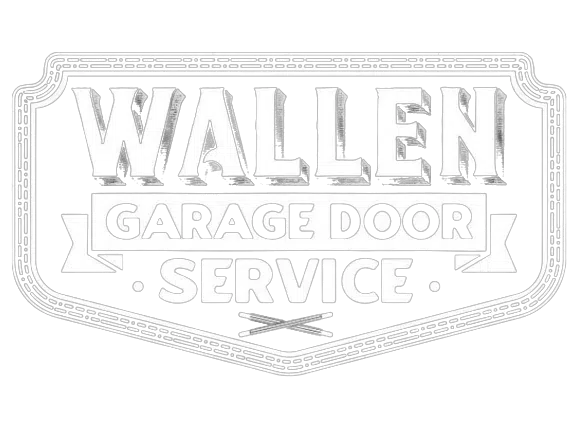Garage door openers: they’re the unsung heroes of modern convenience, quietly facilitating our comings and goings without much thought. But have you ever paused to ponder the wizardry that enables these behemoths of metal and wood to glide effortlessly at the push of a button? In this exploration, we embark on a journey through the inner workings of garage door openers, unraveling the mysteries behind their seemingly magical operations.
Imagine the scene: you arrive home after a long day, hands laden with groceries or perhaps weary from the day’s toils. With a mere click of a button, your garage door obediently swings open, welcoming you with open arms into the sanctuary of your home. It’s a scenario so commonplace in our daily lives that we seldom spare a thought for the intricate mechanisms silently humming away above our heads.
But behind this facade of simplicity lies a symphony of engineering marvels, each component meticulously designed to ensure seamless functionality. From motors to sensors, gears to remote controls, every piece plays a vital role in orchestrating the balletic dance of metal and motion that we’ve come to take for granted.
So, dear reader, if you’ve ever found yourself intrigued by the mechanics of everyday marvels, prepare to be enthralled. Join us as we peel back the layers of complexity surrounding garage door openers, shining a light on the technology that elevates mundane tasks to moments of pure convenience. Ready to uncover the secrets behind the curtain? Let’s dive in.
Understanding the Basics
Before we delve into the inner workings of garage door openers, it’s essential to understand the key components that make up these systems. At its core, a typical garage door setup consists of the door itself, tracks, springs, and hinges. The door, usually constructed from steel or wood, serves as the barrier between your garage and the outside world, while the tracks guide its movement along the ceiling or walls. Springs provide counterbalance, making it easier to lift the door manually if needed, and hinges allow for smooth articulation as the door opens and closes.

Introduction to garage door opener mechanisms
Now, let’s turn our attention to the star of the show: the garage door opener itself. At first glance, it may appear as a simple box affixed to the ceiling, but within lies a sophisticated ensemble of gears, motors, and pulleys. The primary function of the opener is to automate the process of raising and lowering the garage door, sparing us the effort of wrestling with its weight manually.
The mechanism operates on a straightforward principle: when activated, the opener’s motor engages, turning a gear that drives a chain, belt, or screw. This, in turn, pulls or pushes the door along its tracks, smoothly guiding it to its desired position. It’s a testament to the ingenuity of human engineering, transforming what was once a laborious task into a seamless operation with just the press of a button.
Explanation of the role of remote controls and sensors
But how does the opener know when to swing into action? That’s where remote controls and sensors come into play. Remote controls, typically small handheld devices or wall-mounted panels, send signals to the opener, instructing it to open or close the door. These signals are transmitted via radio frequency, allowing for convenient operation from inside your car or home.
Meanwhile, sensors serve as the guardians of safety, ensuring that the path is clear before the door begins its descent. Most modern garage door openers are equipped with photoelectric sensors mounted near the bottom of the door tracks. These sensors emit an invisible beam of light, which, when interrupted by an obstruction such as a pet, child, or vehicle, triggers the opener to halt its movement, preventing accidents and damage.
In essence, remote controls and sensors act as the gatekeepers of garage door operation, granting us effortless control while prioritizing safety above all else. Together with the mechanical marvels housed within the opener itself, they form a symbiotic relationship that epitomizes the intersection of convenience and security in our daily lives.
Mechanics in Action
Step-by-step breakdown of the opening process
Picture this: you’re seated comfortably in your car, idling in the driveway after a long day’s work. With a simple press of a button on your remote control, the magic begins to unfold. But what exactly happens behind the scenes as your garage door gracefully ascends? Let’s break it down step by step.
- Activation: As you trigger the remote control, a signal is sent wirelessly to the garage door opener, prompting it to spring into action.
- Motor Engagement: Inside the opener, an electric motor whirs to life, generating the mechanical force necessary to move the door.
- Drive Mechanism: Depending on the type of opener you have, a chain, belt, or screw drive system is set into motion, translating the rotational force of the motor into linear motion along the door’s tracks.
- Door Movement: With synchronized precision, the opener guides the door along its path, gradually lifting it off the ground and into the open position.
- Completion: Once fully open, the motor disengages, and the door comes to a rest, ready to welcome you home with open arms.
Insight into the role of motors and drives
At the heart of every garage door opener lies its trusty companion: the electric motor. This powerhouse of innovation transforms electrical energy into mechanical motion, providing the muscle behind the opening and closing of your garage door. But it’s not just brute force that drives the system forward; precision and efficiency are equally paramount.
Paired with the motor is the drive mechanism, the unsung hero responsible for translating rotational energy into the linear movement required to lift and lower the door. Chain drives, reminiscent of bicycle chains, utilize a sturdy metal chain to pull the door along its tracks. Belt drives, on the other hand, employ a reinforced rubber belt for smoother, quieter operation. Finally, screw drives harness the power of a threaded rod to push or pull the door along its path with precision and reliability.
Together, the motor and drive mechanism form a dynamic duo, seamlessly coordinating their efforts to ensure the smooth and reliable operation of your garage door opener day in and day out.
Explanation of safety features and sensors
In the realm of garage door openers, safety reigns supreme. After all, what good is convenience without the assurance of protection for you and your loved ones? That’s where safety features and sensors come into play, acting as the silent sentinels that stand guard against potential hazards.
One of the most critical safety mechanisms is the photoelectric sensor, a pair of devices mounted near the bottom of the door tracks. These sensors emit an invisible beam of light across the opening, detecting any obstructions in the door’s path. Should anything interrupt this beam—a stray bicycle, a curious pet, or even a small child—the opener immediately halts its operation, preventing accidents and injury.
Additionally, modern garage door openers are equipped with auto-reverse mechanisms, which automatically reverse the door’s direction if it encounters resistance while closing. This provides an extra layer of protection against entrapment and ensures that even in the event of a malfunction, safety is never compromised.
In essence, safety features and sensors serve as the silent guardians of your garage, working tirelessly behind the scenes to provide peace of mind and security for you and your family. By prioritizing safety alongside convenience, garage door openers epitomize the harmonious balance between technological innovation and human welfare.
Types of Garage Door Openers

Overview of chain-drive, belt-drive, and screw-drive openers
When it comes to garage door openers, one size certainly does not fit all. Different lifestyles, budgets, and preferences call for different types of openers, each with its own unique set of characteristics and advantages. Let’s explore three of the most common types: chain-drive, belt-drive, and screw-drive openers.
- Chain-Drive Openers:
- As the name suggests, chain-drive openers utilize a sturdy metal chain to move the garage door along its tracks.
- Known for their reliability and affordability, chain-drive openers have long been a popular choice among homeowners.
- However, they tend to be louder than their counterparts due to the clanking of the metal chain as the door operates.
- Belt-Drive Openers:
- In contrast to chain-drive openers, belt-drive openers employ a reinforced rubber belt to move the door, resulting in quieter operation.
- This makes them an ideal choice for homes with living spaces adjacent to or above the garage, where noise levels are a concern.
- While typically pricier than chain-drive openers, the peace and tranquility they afford may be well worth the investment.
- Screw-Drive Openers:
- Screw-drive openers utilize a threaded rod mechanism to lift and lower the garage door, offering a middle ground between chain and belt drives.
- Known for their simplicity and reliability, screw-drive openers require minimal maintenance and are less prone to wear and tear.
- However, they may not be as quiet as belt-drive openers, making them better suited for detached garages or homes where noise is less of an issue.
Comparison of different types based on noise level and performance
Now that we’ve explored the key features of each type of garage door opener, let’s take a closer look at how they stack up against each other in terms of noise level and performance.
- Noise Level:
- Chain-Drive: While durable and cost-effective, chain-drive openers tend to produce more noise due to the clanking of the metal chain against the tracks.
- Belt-Drive: With their smooth rubber belt mechanism, belt-drive openers operate much quieter than their chain-driven counterparts, making them an ideal choice for homes where noise is a concern.
- Screw-Drive: Falling somewhere in between chain and belt drives, screw-drive openers offer a balance of reliability and noise level, making them suitable for a variety of residential settings.
- Performance:
- Chain-Drive: Despite their louder operation, chain-drive openers are known for their reliability and ability to handle heavy garage doors with ease.
- Belt-Drive: Belt-drive openers offer smooth and quiet operation, making them a popular choice for homeowners seeking convenience without sacrificing peace and quiet.
- Screw-Drive: Screw-drive openers are prized for their simplicity and durability, requiring minimal maintenance and offering consistent performance over time.
Ultimately, the choice between chain, belt, and screw-drive openers boils down to your individual needs and preferences. Whether you prioritize affordability, noise level, or long-term reliability, there’s a garage door opener out there to suit your lifestyle. So weigh your options carefully, and rest assured knowing that whatever choice you make, convenience and peace of mind await just beyond your garage door.
Maintenance and Troubleshooting

Tips for keeping garage door openers in optimal condition
Your garage door opener is a trusty companion, faithfully serving you day in and day out. But like any mechanical system, it requires a little TLC to keep it running smoothly for years to come. Here are some simple yet effective tips for maintaining your garage door opener in optimal condition:
- Regular Inspection: Take the time to visually inspect your garage door opener and its components for signs of wear and tear. Look out for loose screws, frayed cables, or any unusual sounds during operation.
- Lubrication: Keep moving parts well-lubricated to prevent friction and prolong the life of your opener. Apply a silicone-based lubricant to rollers, hinges, and tracks at least once a year.
- Test Safety Features: Periodically test the auto-reverse mechanism and photoelectric sensors to ensure they’re functioning properly. Place an object in the door’s path while closing to verify that it stops and reverses direction as intended.
- Cleanliness: Keep the area around your garage door opener clean and free of debris to prevent obstructions and ensure smooth operation. Remove dust and dirt buildup from sensors and tracks regularly.
- Professional Inspection: Schedule an annual maintenance checkup with a qualified technician to address any potential issues before they escalate. A professional can identify and fix problems you may have overlooked, saving you time and money in the long run.
By incorporating these simple maintenance practices into your routine, you can help extend the lifespan of your garage door opener and enjoy reliable performance for years to come.
Common issues and troubleshooting techniques
Despite your best efforts at maintenance, occasional issues with your garage door opener may still arise. Here are some common problems you may encounter and troubleshooting techniques to address them:
- Door Doesn’t Open or Close:
- Check the power source: Ensure the opener is plugged in and receiving power. If not, check the circuit breaker or replace the fuse.
- Inspect the remote control: Replace the batteries in the remote control and ensure it’s programmed correctly to communicate with the opener.
- Test the wall switch: If the remote control isn’t working, try using the wall-mounted switch to determine if the issue lies with the remote or the opener itself.
- Noisy Operation:
- Lubricate moving parts: Apply lubricant to rollers, hinges, and tracks to reduce friction and minimize noise during operation.
- Tighten hardware: Check for loose screws or bolts on the opener and tighten them as needed to eliminate rattling or shaking.
- Door Reverses Unexpectedly:
- Adjust the travel limits: If the door reverses before fully closing, adjust the travel limits on the opener to ensure it stops at the correct position.
- Clean the sensors: Remove any dirt or debris obstructing the photoelectric sensors and realign them if necessary to restore proper function.
- Door Opens or Closes Unevenly:
- Check for obstructions: Remove any objects blocking the door’s path and ensure tracks are clear of debris.
- Inspect springs and cables: Look for signs of wear or damage to springs and cables and replace them if necessary to restore balance and smooth operation.
By troubleshooting these common issues proactively and addressing them promptly, you can keep your garage door opener running smoothly and maintain the convenience and security it provides. Remember, when in doubt, don’t hesitate to seek professional assistance to ensure the safety and functionality of your garage door opener.
Frequently Asked Question on How Do Garage Door Openers Work?
How do garage door openers detect obstacles?
Garage door openers are equipped with safety features designed to detect obstacles in the door’s path and prevent accidents or damage. One common method of obstacle detection is through the use of photoelectric sensors, also known as safety sensors. These sensors are typically installed near the bottom of the garage door tracks and emit an invisible beam of light across the opening. If anything interrupts this beam while the door is closing—a person, pet, or object—the opener will automatically stop and reverse direction to avoid contact. This crucial safety feature provides peace of mind for homeowners and helps prevent injuries and property damage.
Can I install a garage door opener myself?
While some homeowners may have the skills and experience necessary to install a garage door opener themselves, it’s generally recommended to hire a professional for this task. Installing a garage door opener involves electrical wiring, precise measurements, and adjustments, which can be challenging for those without specialized knowledge. Additionally, hiring a professional ensures that the opener is installed correctly and safely, minimizing the risk of malfunctions or accidents. Most garage door opener manufacturers offer professional installation services, making it convenient to enlist the help of a trained technician.
What should I do if my garage door opener stops working suddenly?
If your garage door opener suddenly stops working, there are several troubleshooting steps you can take to try and identify the problem:
- Check the power source: Ensure the opener is plugged in and receiving power. If not, check the circuit breaker or replace the fuse.
- Test the remote control: Replace the batteries in the remote control and verify that it’s programmed correctly to communicate with the opener.
- Inspect the safety sensors: Make sure the photoelectric sensors are aligned properly and free of dirt or debris that could obstruct the beam.
- Reset the opener: Some garage door openers have a reset button or switch that can be used to reboot the system and clear any temporary issues.
- Consult the owner’s manual: Refer to the manufacturer’s instructions for troubleshooting tips specific to your garage door opener model.
If none of these steps resolve the issue, it may be time to contact a professional technician for further assistance.
Are there any security risks associated with garage door openers?
While garage door openers provide convenience and security for homeowners, they can also pose security risks if not properly maintained or secured. One potential risk is the vulnerability of older or outdated garage door opener models to hacking or remote manipulation. These systems may lack encryption or other security features, making them susceptible to unauthorized access by cybercriminals. Additionally, garage door remotes left in vehicles or easily accessible locations can be stolen or duplicated, allowing intruders to gain entry to the home. To mitigate these risks, homeowners should ensure their garage door opener is equipped with modern security features such as rolling code technology and encrypted signals. It’s also important to keep garage door remotes secure and avoid leaving them in vehicles or visible locations.
How long do garage door openers typically last?
The lifespan of a garage door opener can vary depending on factors such as usage, maintenance, and environmental conditions. On average, a well-maintained garage door opener can be expected to last anywhere from 10 to 15 years. However, some openers may last longer with proper care, while others may experience premature failure due to neglect or wear and tear. Regular maintenance, including lubrication of moving parts, inspection of safety features, and prompt repair of any issues, can help extend the lifespan of your garage door opener. Additionally, investing in a high-quality opener from a reputable manufacturer and having it professionally installed can contribute to its longevity. If your garage door opener is nearing the end of its lifespan or experiencing frequent malfunctions, it may be time to consider replacing it with a newer model.
Conclusion
In the course of our exploration into the mechanics of garage door openers, we’ve uncovered a world of innovation and ingenuity hidden behind the facade of everyday convenience. From the intricate interplay of motors and drives to the critical role of safety features and sensors, each component plays a vital role in ensuring the smooth operation of these modern marvels.
Recapping our key points, we’ve learned:
- The essential components of garage door systems, including the door itself, tracks, springs, and hinges.
- The diverse types of garage door openers available, from chain-drive to belt-drive and screw-drive mechanisms, each offering its own unique blend of performance and noise level.
- Maintenance tips and troubleshooting techniques to keep your garage door opener in optimal condition, from regular lubrication to testing safety features.
- Common questions and concerns surrounding garage door openers, from obstacle detection to installation and security risks.
- The typical lifespan of garage door openers and the importance of proactive maintenance and replacement when necessary.
As we draw our journey to a close, I encourage you to continue exploring the fascinating world of garage door openers. Whether you’re a homeowner seeking to maximize convenience or a curious enthusiast eager to delve deeper into the intricacies of this everyday technology, there’s always more to learn and discover.
Remember, by staying informed and proactive, you can ensure the smooth and reliable operation of your garage door opener for years to come. So, why not embark on your own quest for knowledge and empowerment? Curious to learn more about the workings of garage door openers? Keep reading to uncover fascinating insights into this everyday technology!
Curious to learn more about the workings of garage door openers? Keep reading to uncover fascinating insights into this everyday technology!






